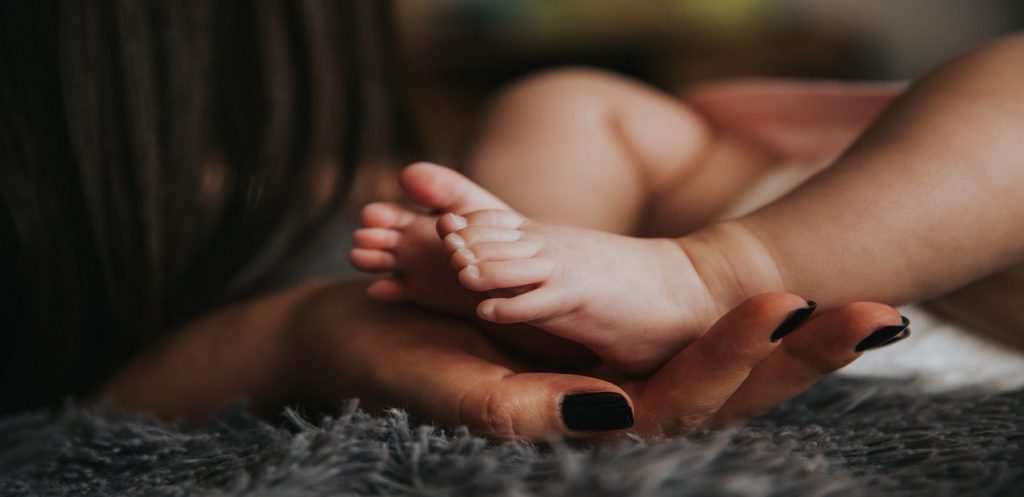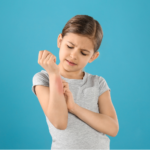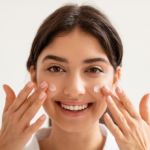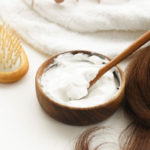Your baby’s skin is a protective covering against the outside world. It’s also a source of interaction, awakening and emotion connected with each of your baby’s senses. Since skin provides protection and aids sensory development, it needs specific care and your full attention from the time your baby is born. In order to give your baby’s skin the care it needs each day, you need to be able to recognize your baby’s skin type, fully understand the needs and use the right products for that skin type.
Recognizing atopic prone baby skin
Atopic prone baby skin is extremely dry, itchy, and may regularly develop rough red patches, especially on the face, folds of the skin (neck, elbows, back of the knees) and extremities (hands, wrists, ankles). Atopic dermatitis can be hereditary. It is best to visit a doctor to know if your baby is diagnosed with atopic prone skin.
Understanding atopic prone baby skin
Your baby’s skin is like all infant skin, which seems so beautiful and perfect but in fact it’s extremely delicate.
At birth, babies have an immature skin barrier. Your baby’s skin is highly delicate and vulnerable to daily outside attacks, and does not reach the first stage of maturity until the age of two.
Between birth and age two, a baby’s skin is not yet able to retain the proper level of moisture it needs for its cells to function properly.
A baby’s skin has an unsuspected source of strength at birth: a reserve of stem cells, unique for an entire lifetime, enabling skin to regenerate all the life, but extremely vulnerable and fragile until the age of 2.
The special nature of a baby’s skin compared to adult skin has been scientifically proven, thanks to an unprecedented Mustela research program spanning more than a decade that studied infant skin from the first days of life.
Atopic prone skin compared to normal and dry skin
One in 5 children are affected from atopic dermatitis. Atopic-prone skin symptoms can appear by the age of two months (sometimes even earlier) and can abate or disappear at around five or six years old. In the meantime, it requires special attention to soothe your baby.
You need to know that atopic skin is not rare, nor contagious to other children, and not irreversible.
It comes from a combination of two key factors: an extremely reactive immune system and very dry skin.
Excessive reaction of the immune system + dry skin = atopic-prone skin if there are allergens or in particular environmental situations. This results in more or less inflammatory red patches.
It can be hereditary. There is a 40-50% probability that the child will also develop atopic dermatitis when one of the parents is atopic, and a 50-80% probability when both parents are atopic.
Addressing the needs of your baby’s dry skin
To fully address the needs of your baby’s atopic skin, Mustela researchers have developed special active ingredients: Avocado Perseose and Sunflower Oil Distillate.
Replenishing patented natural ingredients:
- Sunflower Oil Distillate: has soothing properties and provides lipids essential to maintaining skin’s moisture barrier.
- Avocado Perseose: preserves the cellular richness, moisturizes and protects the skin barrier, daily damaged for atopic-prone skin.
Discover the line of Mustela baby-child atopic prone skin products
Mustela® offers a new generation of Stelatopia® skincare products: a range of 4 hygiene and skin care products, specifically designed to soothe and replenish atopic-prone skin in babies and children.
It is clinically proven and has a high tolerability from birth on, tested under dermatological and pediatric control. If your child has atopic prone skin, he needs Stelatopia, with emollients specifically chosen to nourish and soothe skin and improve the quality of your child’s life.
Shop the great range of Mustela products on Mumzworld.






